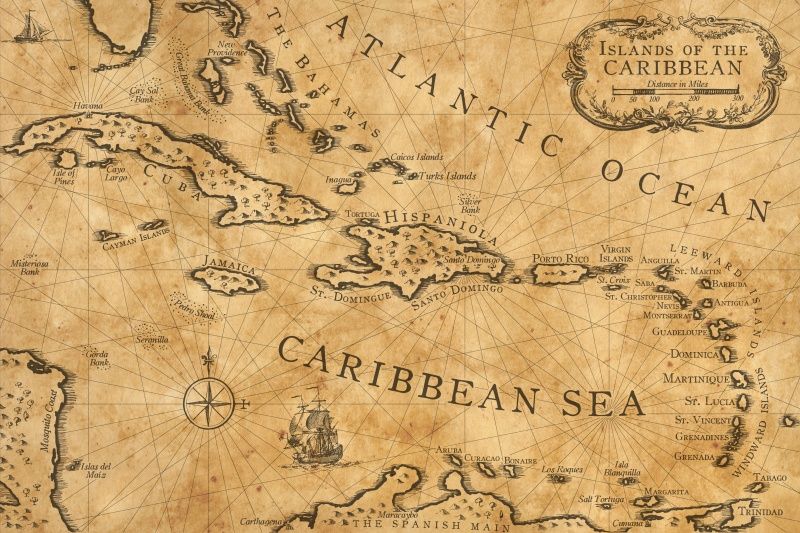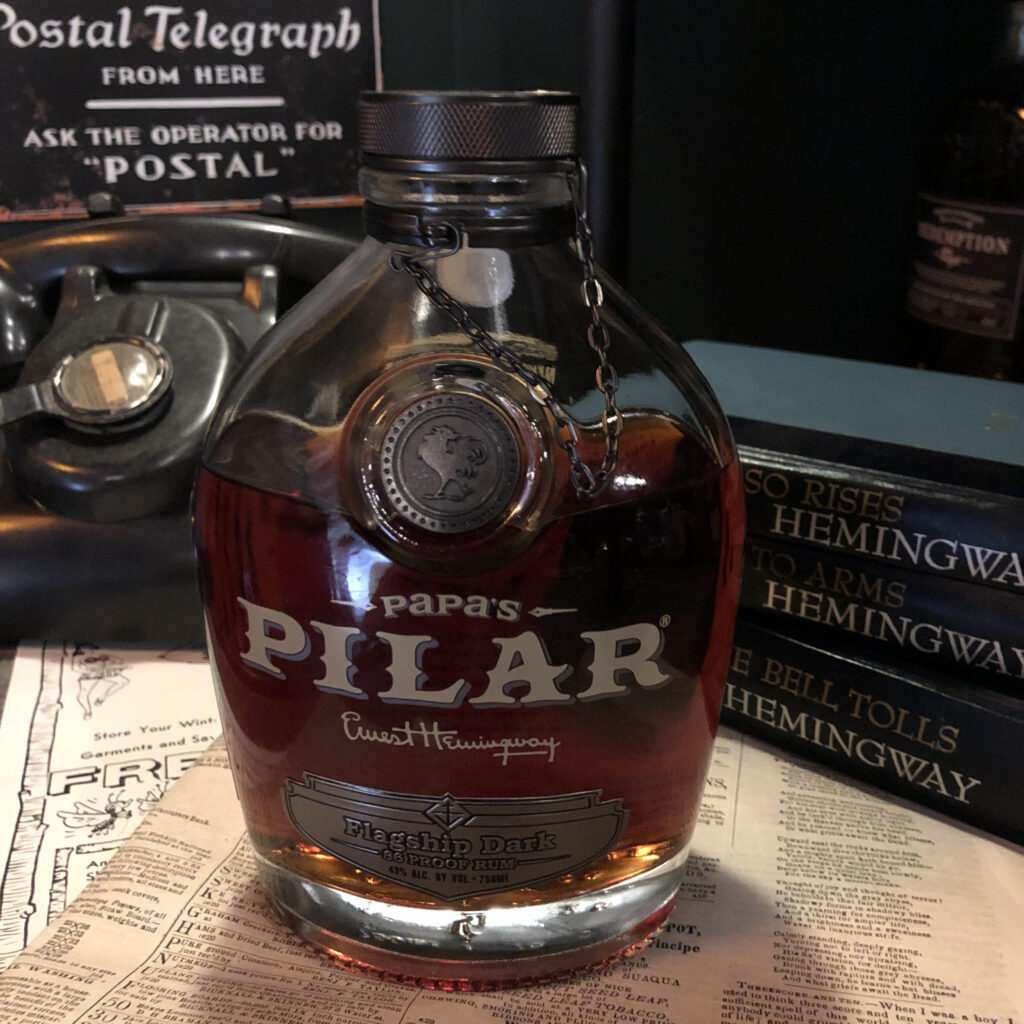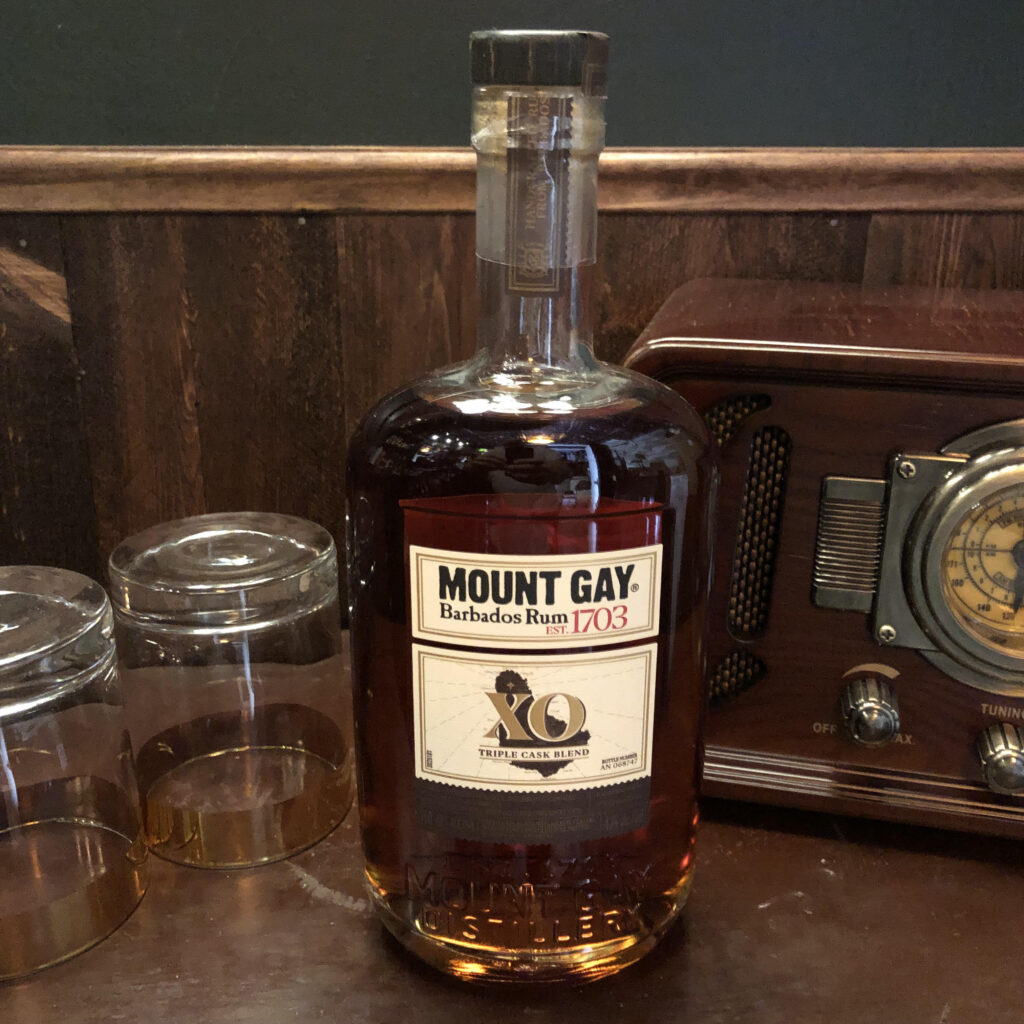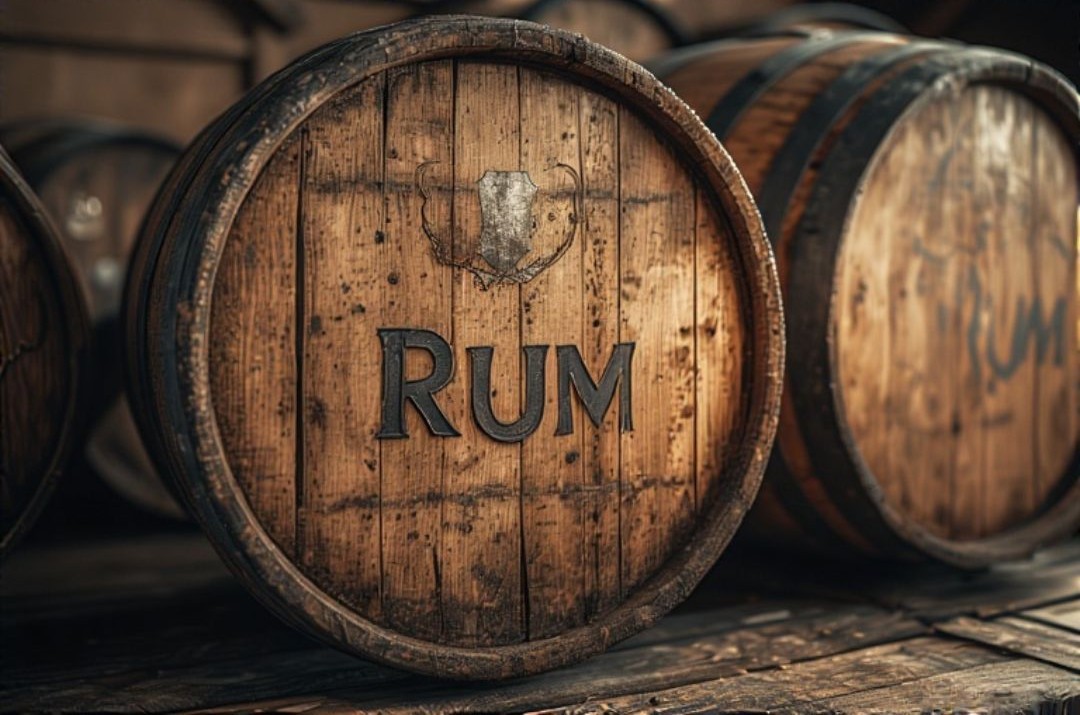"Nothing Ventured, Nothing Gained..."

Can rum become the next whiskey? It’s a fair question. With all the media banter about the gloom and doom in the whiskey market of late, some are asking, “What is the next whiskey” now that the “straight liners” have declared that the “whiskey boom” is over? The “straight liners” are those who look at a market trend and draw a straight line off that trend into the future. Their predictions are often either for a giant boom or a total crash in whatever chart they are looking at. You can find these guys all over social media pontificating about every market trend they see, not just whiskey.
Cooler heads have recently turned their attention (and their production) to American Single Malt (ASM) as the next big thing. The new official designation for ASM has stoked that marketing fire. But just because we might want a thing to be true, doesn’t automatically make it so. The pesky consumers just might have a say in where the market goes next, and the market for ASM is still too immature to declare it a hit with consumers.
While the market for ASM remains in its infancy, and retail spirits pricing remain what they are, other traditional spirits are again on the table. Literally.
I’ll begin by listing the similarities that rum has with whiskey;
Both expressions…
1. are a distillate product that contains alcohol.
2. are sourced from an agricultural product.
3. are fermented with yeast.
4. are often aged in wooden casks.
5. are usually either clear or brown/golden in color.
6. have been a part of global trade for centuries.
7. often exhibit complex flavor notes due to similar chemical processes through distillation and while aging.
8. may contain additives in the finished product.
9. are often blended.
By now, you might be thinking that with all these things in common, that rum must be a natural contender to become the “next whiskey.” You would be wrong because this is where the similarity ends.

I began by approaching rum rather methodically. I discounted unaged rums offhand because there seems to be millions of them to sort through, and it is my general approach that clear spirits are for mixing in cocktails and such. If I wanted to find anything that approaches a whiskey-like expression, it would at least have to be barrel aged. I do have a close friend who is into rum and I asked him to help me find a “benchmark” aged rum. This, I was hoping, would be a standard that once discovered, could help me discern what a higher quality rum should look like. What I learned was that there are bad rums, good rums, exceptional rums, but nothing that can be truly be called a “standard rum.”
Here is why; Scotch, for example, must be made and aged in Scotland according to a defined standard. Nowhere else on the planet is Scotch made, even though expressions with similar profiles are made outside of Scotland. The same is true for Irish whiskey, bourbon, American Single Malt, and so on. Rum, however, is not pinned down like that at all. It is produced in over fifty different countries without any universal standards whatsoever. It is generally accepted that rum is to be produced from cane sugar, cane juice, or molasses, but this is where anything approaching a standard ends. Finding an expression that represents all rum as a standard is simply not practical or even possible.
It is also my theory that in an age where transparency in consumer goods is the universal expectation, the rum category has suffered as a whole compared to other spirit categories because of the traditional lack of it. In spite of this glaring obstacle, rum sells and a large and growing number of rum SKU’s has remained on store shelves around the globe. In spite of overall rum sales volume slipping 8.9% below the previous year, rum finished with the fifth largest spirit volume sales in the U.S. in 2024[i]. Premium rum is a different story; it’s growing.
“Growth is being fueled by the continued spread of cocktail culture, but also by a change of image for rum, which is increasingly being taken seriously as a high-quality spirit to rank alongside Cognac and single malt Scotch whisky…’The change in perception of rum from a spirit that is drunk mixed, to one that can be sipped continues,’ says Jose Luis Hermoso, Research Director, IWSR. ‘Premium-and-above rum is therefore growing at the expense of lower qualities.'”[ii]
But can rum continue to exhibit a broader appeal to whiskey enthusiasts in the near future? Is there a potential for crossover for Bourbon Snobs? The answer is, it depends.
“‘The lack of a standardised framework for rum production makes it harder for brands to convey a quality ladder across rum products,’ explained Marten Lodewijks, president of IWSR’s US division.”[iii]
In other words, it’s difficult to express to the consumer what a base, mid-level, premium and super-premium rum is when there is no rum standard to begin with. I’ll take a shot at it. Of all the rum choices out there, for the sake of brevity, I am only going to discuss two particular premium expressions that are the most “whiskey-esce.”

Papa’s Pilar Dark Rum “Flagship” From their website: ” Papa’s Pilar Rum is inspired by Ernest ‘Papa’ Hemingway and his beloved boat, the Pilar…Papa’s Pilar Dark is an ultra-premium sipping rum, bold and well-traveled, much like the man who inspired it…This 86 proof, award-winning rum has a rich maple, chocolate, ripe fig and candied orange taste profile. $44.99, 750ml, 43% ABV, 86 proof.
Papa’s Pilar certainly jumps out at you among the lineup of rums at retail. I’ll take a minute here to talk about their bottle design because it’s worthy to mention. From their website: “A broad-shouldered and compact form that has strong historical ties to adventure, each bottle of Papa’s Pilar is fashioned after an authentic WWII canteen. A traditional screw top closure reinforces the canteen design with a compass-style top…”
Okay, it’s a really cool bottle design. Sure, I love that. I’ve been to Key West. I’ve been to Hemmingway’s house and toured the property. I went through the rooms in his house there, and you can learn a lot about a man just by doing that. Yes, he was a writer and a man of adventure; but this was also a man who installed a second-hand urinal in his garden. I think even he would say that bottling an exceptional rum in his name in such an over-the-top package is a bit much. He’d probably settle for having his namesake rum sold in used mason jars with rusty lids, or a reused soda bottle fitted with a makeshift with a cork. It’s marketing aimed at us, not for him.
Even so, it’s not the glass, but what is in the glass that matters, of course. With Papa’s Pilar what we get is an award-winning dark rum sourced from five different countries, expertly blended solera-style, like a cognac method. It’s indeed a dark colored rum. Does its being a beautiful dark brown color mean its aged well or contains all the flavors we have come to expect in a spirit with this color? Nope. Color is almost meaningless with rum because rum producers and bottlers can add as much e150 caramel color to it as they want.
The Bourbon Snobs will ask, “how old is it?” Who the hell knows? With an exceptional rum that turns out this well, you won’t care, Mr. Bourbon Snob. Get over it. The solera system is both an aging and a blending system that makes delineating the age of the finished spirit impossible. It is a system that is employed to drive quality and consistency above all else, and with Papa’s Pilar, the results are indeed fantastic. If this were a whiskey and not a rum, the price would be more than doubled. Indeed I have had whiskey that cost far more with far less flavor.
On the nose there is maple syrup and brown sugar and warm spice with a subtle shot of peppercorn. The palate starts off with the flavor of brown sugar without the sugary sweetness of it. This dissolves into notes of chocolate, caramel, vanilla and dark fruits. Maybe some toasted almond in the background. The finish is a delicate push of vanilla and a hint of baking spice. The body and mouthfeel of Papa’s Pilar is very similar to that of a fine bourbon. Its medium to heavy bodied and coats the mouth completely. Don’t wait for the bite on this one, because it’s not there.
This expression is finished in ex-Bourbon, ex-Port, and ex-Oloroso sherry casks, all blended together. The complexity of flavors is a delight, but almost bewildering. If I sat a little longer with it, I probably could have picked out additional flavor notes. If you’re looking for a super-premium rum expression to stand up against your favorite bourbon, you will find it with Papa’s Pilar.
While Papa’s Pilar contains rums from Barbados and elsewhere, why not go directly to the source? Barbados is the oldest rum producing nation on the planet. The soil on the island is well suited for growing sugar cane because it is calcium rich, having formed from a coral reef rather than from volcanic activity like other Caribbean Islands. By 1667 they were producing sugar cane on 25,000 acres and exporting 1.1 million gallons of rum annually.[iv]
Barbados has suffered through all the ups and downs in the global rum market. But if there are experts in the field of making rum, the distillers of Barbados would have to be at the top of that list. Today, only four rum distilleries operate there. Chief among these is the oldest rum distillery on the planet (1703), Mount Gay, which was named after Sir John Gay Alleyne who once managed the operation.[v]
Mount Gay defines the classic Barbados style of rum by blending copper pot distilled product with column distilled product.

Mount Gay XO From their website: “Round & complex, small batch reserve rum. A small blend of carefully selected mature rums. A beautifully round and complex liquid. Matured in American whiskey, Bourbon, and Cognac casks.” $54.99, 750ml, 43% ABV, 86 proof.
This expression contains rums aged from 5 to 17 years old. That’s probably common for this dark type of rum blend, and it would not surprise me if Papa’s Pilar used a similar range of aged product to produce theirs. Their packaging is a rather plain arrangement of clear glass and a cork, politely embossed with their name at the bottom, old school style.
On the Nose: Definitely aromas of vanilla and caramel first. Then it’s a waft of toasted almonds and maybe hint of baking spice. The palate is all velvet and silk. The aromas carry forward with the same flavors of vanilla, caramel, and toasted almonds. There is the brown sugar sweetness present, too. The finish is relatively long and pleasant, again so smooth here.
For whiskey guys, maybe keep an open mind with regards to aged rums. If any rums could entice a whiskey enthusiast to try them, these two would be the ones.
[i] Kiely, M. (2025, February 13). Top five biggest spirits by volume in us in 2024. The Spirits Business. https://www.thespiritsbusiness.com/2025/02/top-five-biggest-spirits-by-volume-in-us-in-2024/#:~:text=Vodka,74.9m%20the%20year%20prior.
[ii] Bopgun. (2024, May 31). Why is brown-forman investing in the Premium Rum Category?. IWSR. https://www.theiwsr.com/insight/why-is-brown-forman-investing-in-the-premium-rum-category/
[iii] Carruthers, N. (2024, November 4). Rum sees “mixed” performance in US. The Spirits Business. https://www.thespiritsbusiness.com/2024/11/rum-sees-mixed-performance-in-us/
[iv] Stephenson, T., & Chinn, A. (2017). Curious bartender’s rum revolution. Ryland, Peters & Small. Pg. 67
[v] Stephenson, T., & Chinn, A. (2017). Curious bartender’s rum revolution. Ryland, Peters & Small. Pg. 72




